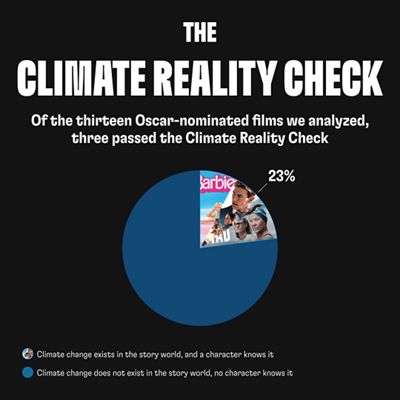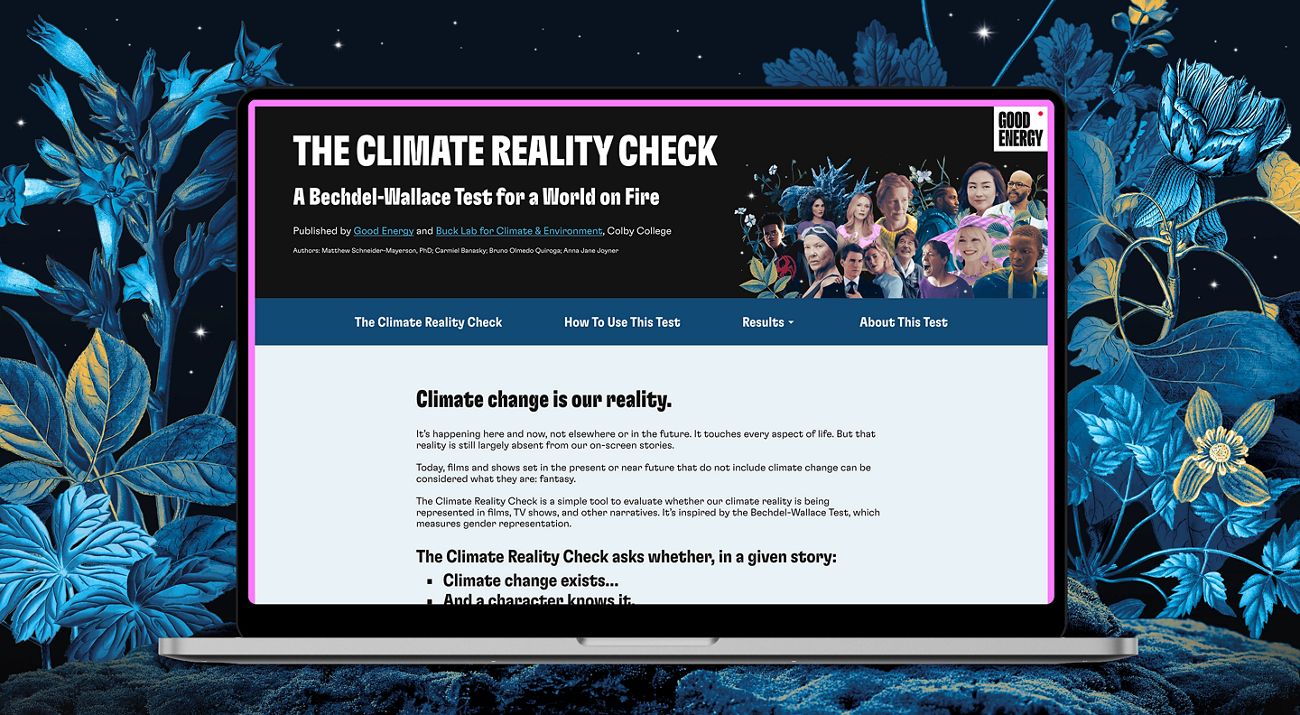What do the “Barbie” movie, “Mission: Impossible” and “Nyad” have in common?
These 2023 films all pass the Climate Reality Check, a storytelling standard that sets two simple criteria:
- Climate change exists,
- And a character knows it.
We interviewed Dr. Matthew Schneider-Mayerson—the test’s lead researcher, an expert on empirical ecocriticism and a professor of English at Colby College—to learn more about the Climate Reality Check and why climate narratives matter.

TNC: How did you get interested in climate fiction as a research focus?
Dr. Schneider-Mayerson: I’ve always been interested in the relationship between art and social issues. Growing up in New York in the ’80s, I loved political graffiti as a kind of public commentary—seeing how art can affect how people think about the world. I was doing a Ph.D. in American studies at the University of Minnesota around 2013 when climate fiction started becoming more of a phenomenon.

What trends have you seen in climate representation?
Today you see a lot of mentions of climate change in narratives that aren’t otherwise focused on environmental issues in any way—which makes sense because it's increasingly being acknowledged as an important part of life.
There’s also been a pushback against the trend of writing cautionary, apocalyptic climate tales. While it can be valuable to remind people of just how bad things can get, I think modeling different forms of collective action is important, too—it reminds us that the future always remains unwritten.
Have you found any evidence that climate fiction can change people’s perspectives?
I collaborated on a study investigating this. We found that climate narratives did make people more concerned about climate change, heightening their risk perception and willingness to act. But the narratives did not have a particularly long-lasting impact.
The findings underscored the fact that we don’t just need one climate narrative to change everyone’s mind but a whole tidal wave of narratives to orient us in a better direction.
Is this why you worked on the “Climate Reality Check” with Good Energy?
Exactly. Since most people are not going to consume a huge amount of explicitly climate-focused content, it’s important to figure out how climate change can be a part of any story. The Climate Reality Check is not demanding that every story center climate change. It’s really just asking, ‘do the stories we tell represent the world that we're living in today?’ We tried to create a test that sets this kind of baseline while also being flexible and inspiring creativity.
I think the Climate Reality Check is something that could stick with people. Maybe they laugh about it, and then they go home and watch something and realize, Hm, this show that I’ve been watching for a week, climate change is not happening in it at all. It’s existing in a fantasy universe. And then, what they do with that knowledge—whether it’s telling somebody else, taking to social media—that realization is up to each person.
You’re a teacher as well as a researcher. How do your students change your perspective on your research and on climate change in general?
The level of awareness and concern in students today is so different from where it was 10 or even five years ago. My students today were born into this crisis, whereas those of us who are my age or older are maybe hoping that things will just change back or are remembering the “before times.”
I used to teach a project-based environmental activism class at Yale-National University Singapore—and one of my student groups started the first divestment campaign in all of southeast Asia. The campaign is still going on, and a number of those students ended up helping to form one of the biggest climate activist groups in Singapore, SG Climate Rally. It’s always inspiring to see the ways students are building on what we discuss and doing things I could never have even imagined.
Whenever I feel a little bit hopeless, I remind myself that I don't really have that luxury, because my students’ futures are still ahead of them. And as dire as things are, the number of young people who are deeply concerned about the climate crisis and committed to playing a part in the movement for addressing it—that’s exciting.
Let's Make Breakthroughs Break Through
The climate and biodiversity crises are interconnected and daunting. But by working together, we can overcome the barriers to the solutions our planet needs. Get our monthly newsletter and join a community of changemakers.






